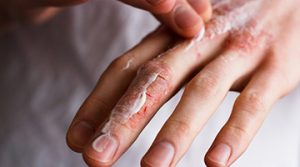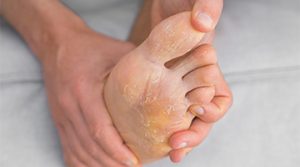Fungi are everywhere. There are millions of species of fungus on earth, but only about 300 or so could be harmful to humans. The most common way humans are in danger from fungus is through skin infections. So, what exactly is a fungal skin infection, its causes and effects, who is more prone to the condition, and what are the available skin fungus treatments? Here you’ll find all the answers to those questions and more. Read on to know the ten most frequently asked questions about skin infections caused by fungi.
1. What’s a fungal infection?
Mycosis or fungal infection is a skin disease which is caused by a fungus. Such infections might lead to skin problems like rashes, itchiness, and bumps. Fungi can survive on almost all surfaces and can be found in the dirt, on household surfaces, on your skin, on plants, etc.
2. What are its common types?
The common types of fungal skin infections include:
Athlete’s foot
It’s a common infection making the skin in between your toes red and itchy with painful cracks and fissures. It can lead to the formation of blisters on the soles of your feet as well.
Nail infection
While this happens anywhere on the nails, fingernails are less likely to get infected than toenails. Your nail may get thicker, rougher, and crumbly. This is more common if you’re older or have other conditions such as diabetes.
Ringworm
This is also a common infection, and you can get it anywhere on your body. As the name suggests, it manifests as a ring-shaped rash that is scaly, itchy, and red. Pets and other animals can also carry ringworms.
Candida Infection
It is known as the ‘thrush’ in some countries. Candida is a yeast that lives inside your body without causing any harm. But given the right conditions, it increases to a certain level to create an infection in parts like around the genitals, inside the mouth, or elsewhere in the folds of the skin. It causes the area affected to become sore and moist. Pus-filled spots might also appear. Yeast infection is not contagious.
3. What are the symptoms?
Symptoms of fungal infections include:
- Blisters
- Scaly skin
- Redness
- Itchiness
- Irritation at the affected area.
4. How is it caused or who is at risk for developing a fungal infection?
Fungal infections spread from person to person, animal to person, and also, very rarely, from soil to people. Certain infections crop up due to previously harmless fungi in your body that have proliferated to create symptoms, for example, candida (yeast) infection.
Certain people are more likely to develop fungal infections than others. They include people with diabetes, HIV, pregnant women, people with weakened immune systems, and people consuming antibiotics.
5. How can you prevent fungal infections?
You can mitigate the risk of fungal infections by doing simple things like the following:
- Maintain good hygiene and dry yourself completely after washing, especially in the folds of the skin.
- Don’t share items like combs, hairbrushes, towels, etc.
- Wash your socks, clothes, bedsheets, and linen regularly.
- Wear breathable clothing that will help keep the skin dry.
- Use footwear in public places like pools, saunas, and so on.
- Make sure to dry your shoes out before you put them back on again.
- If you suspect your pet of having a fungal infection, you should take it to a vet for treatment.
- If you have an athlete’s foot or a toenail infection, don’t go barefoot in communal swimming pools, gyms, etc.
6. How to treat fungal infection?
Skin fungus treatments include medication that you can buy over the counter. Your pharmacist will provide you with the right advice, though make sure you follow the instructions given with the medicines and creams. If the infection gets worse, then visit your doctor for professional care.
Most skin fungal infection treatment medicines are topical treatments (you put them on your skin directly). There are a variety of treatments available in the form of creams, shampoos, lotions, etc.
If the topical medication does not work for your skin fungus treatment, then you might have to take oral medication for faster results.
7. What are the skincare tips for managing a fungal infection?
As mentioned above, practising good hygiene goes a long way.
- Wash the affected areas daily.
- Dry your skin thoroughly, especially in the folds of your skin.
- Keep your nails short and feet dry to help with toenail infection.
8. How long does the infection last?
It might take up to two weeks for your symptoms to disappear depending on the type of fungal infection and the treatment you take.
Some infections require a long time. For example, if you have a toenail infection, it might take up to a year with a topical treatment or several months with tablets to heal completely. Yet, your nails might never look the same even after the treatment.
9. Is it true that once you get the infection, it is bound to reoccur?
Fungal infections, particularly on toenails and feet, can reoccur. Following a good hygiene routine helps to reduce the risk of the same.
10. Is a fungal skin infection contagious?
Yes, fungal infections are contagious, except for yeast infections. But a few simple precautions like wearing footwear in public spaces and getting your pets checked immediately at the first sign of infection can prevent it from spreading.
Conclusion
Fungal infections are quite common but are highly contagious. Yet, most fungal infections can be treated with over-the-counter medications and topical treatments. Severe infections might require professional help.
Book a call with the leading dermatologists at the Skin and Hair Academy today to get the healthy, glowing skin you deserve.



























